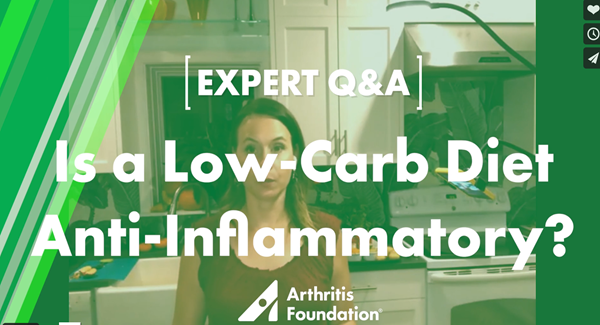How to Eat an Anti-Inflammatory Diet for Juvenile Arthritis
No diet can cure your JA but adding and avoiding certain foods may help control inflammation.
Although there’s no “miracle diet” that can cure juvenile arthritis, there’s evidence that following an anti-inflammatory diet can help. That means loading up on certain foods and avoiding others to manage inflammation, the root cause of arthritis pain. While it’s important to note that most arthritis nutrition studies focus on adults, experts believe following an anti-inflammatory diet is a good idea for kids and teens, too.
Here’s a quick breakdown of how to follow an arthritis-friendly diet.
What to Eat
Give your body the nutrients it needs to fight inflammation from the inside. Studies show a diet rich in these foods may help reduce inflammation:
- Dark leafy greens (kale, spinach, etc.)
- Broccoli
- Cherries
- Berries (blueberries, blackberries, strawberries)
- Healthy fats (extra virgin olive oil, avocadoes, walnuts, almonds, pistachios)
- Fatty fish (salmon, tuna, mackerel, sardines)
- Whole grains (100 percent whole wheat bread, quinoa, brown rice, steel-cut oatmeal, buckwheat)
- Beans (black beans, chick peas, kidney beans)
- Lentils
- Onions
As a rule, colorful fruits and veggies should take up the most space on your plate. These foods have protective compounds like antioxidants and polyphenols that help protect against inflammation.
The Spice Is Right
Spices have been getting a lot of attention recently and for good reason. Turmeric, a spice that’s common in curries, has long been used in Eastern medicine as a go-to treatment for inflammation. Today, studies confirm that the active ingredient in turmeric, curcumin, can help reduce inflammation. If you’re not a fan of curry, curcumin supplements are widely available. Just be sure to talk with your doctor before adding any supplement to your diet.
Ginger is another spice thought to curb inflammation. It can also help with medication-related side-effects like nausea and stomach pain. Again, ask your doctor about the best way to add ginger into your diet for the best results.
What to Avoid
Studies show that foods high in saturated fat and sugar and low in fiber trigger inflammation. These include the highly processed or packaged “junk” foods you typically find in the middle aisles of the grocery store, such as:
- Microwaveable meals
- “Just add water” meals like ramen and easy macaroni and cheese
- Fast food
- Frozen pizza
- Fried foods (French fries, fish sticks, onion rings, fried mozzarella sticks)
- White bread or anything else made with white flour like cake, donuts, cookies and pastries
- Red meat
- Candy
- Chips
- Soda (even diet!) and energy drinks
- Sugary snack foods and cereals
If you’re not sure something is good or bad to eat, check the ingredient list. Stay away from anything made with:
- Partially hydrogenated oils or trans fats
- High fructose corn syrup
- Food coloring
- Ingredients you can’t pronounce
And beware of packaged foods that seem “healthy.” Just because something says it is “natural,” “organic” or “made with real fruit” doesn’t mean it’s not highly processed and loaded with sugar.
All this doesn’t mean having the occasional soda or cupcake is totally off-limits. But in general, try not to eat these types of foods more than once a week.
What About Gluten?
Gluten is the name for a group of proteins found in wheat. For most people, consuming gluten is fine. But people with celiac disease, an autoimmune disease that is triggered from eating gluten, should stay away from wheat. Some people may also find they have a gluten sensitivity or intolerance. Kids and teens with arthritis are a bit more at risk for developing these conditions.
Try noticing how you feel after you eat something with wheat in it. If you have stomach pain every time, tell your doctor. You may need to stop eating gluten, or at least try avoiding for a while to see if it helps. Otherwise, gluten-containing whole grains are part of a healthy anti-inflammatory diet.
Nightshades or Not?
Some people believe that nightshade vegetables – eggplant, tomatoes, peppers and potatoes – can trigger arthritis flares. However, there’s limited scientific evidence to support this theory. You can try cutting nightshades from your diet for two weeks to see if your symptoms improve or stay the same.
Bottomline
If you’re still confused about to eat, don’t sweat it. Sticking to an anti-inflammatory diet can be as easy as choosing fresh, whole foods instead of packaged ones. And remember, any time you want to try eliminating a food or adding a supplement, you must tell your doctor first. He or she can help you plan for any nutritional gaps or medication-related side effects.
Hear firsthand accounts of how juvenile arthritis affects lives. Warning: inspiration ahead!

Connect with Us
Get the latest news and updates on our Juvenile Arthritis resources and events. Sign up by providing your information in the form.


